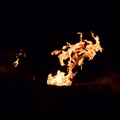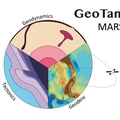President: Paola Vannucchi
(ts@egu.eu)
Deputy President: João C. Duarte
(jdduarte@fc.ul.pt)
The Division on Tectonics and Structural Geology (TS) investigates rock deformation at all scales with the aim to decipher its complex relationships with Earth dynamics. We use natural observations, including mapping, remote sensing and seismics, and experimental methods. The division is highly interdisciplinary, with strong ties with other EGU divisions including GD, EMRP, SM, SSP, GM, G, and GMPV.



NEWS & NEWSLETTER
20. Jan 2022
Join the ECS Representative team of the EGU TS Division
We’re now looking for applicants to join the Early-Career Scientists (ECS) Representative team!
Each EGU division has a representative for its Early-Career Scientists (ECS), acting as a critical link between them and the Union. ECS Representatives work to ensure the needs of ECS members are satisfied, at the General Assembly (GA) in Vienna, and throughout the year. They also take on other responsibilities, depending on experience and interests, ranging from outreach to networking, blogging, or anything else that engages division members.
Currently, the EGU TS Division operates under a three-person representative structure consisting of a 'main' representative, an 'incoming' representative, and a 'shadowing' representative. If you are an ECS of the TS division (see definition) you can always get in contact with the ECS representative team if you have any problems, complaints, suggestions, or simply want to reach out. For instance between the general assemblies of EGU21 and EGU22, you can approach David Fernández-Blanco (main), Silvia Crosetto (incoming), and/or Gino de Gelder (shadowing).
EGU TS ECS Representative team selection process
Any ECS member of the TS division can become an ECS Representative. When freshly elected, the new ECS representative will serve as a 'shadowing' representative for a year: although they cannot attend Union- or Division-wide meetings, they will be involved in team organization, in close contact with the other two representatives, and assist them as needed while being updated about the main points of the meetings. In doing so, the 'shadowing' representative can get to know the team and its processes, and acquire insight into the role. After a year, they are promoted to the position of 'incoming' representative and are exposed to meetings with the division president, other EGU division representatives, and the union-wide activities they promote, while getting prepared to assume the lead as 'main' representative in the third year. This is the point at which they become the official face and voice of the ECS members of the TS division.
Election Procedure
The ECS representative of the TS Division is chosen annually and begins their duties at the General Assembly (GA), which is typically held in April. The application period begins 3 months before the GA (in January) and remains open for a month (until the end of February). The selection committee (ECS representative team, presidential team, and the chiefs of media, blogs, and activities teams) evaluates submitted applications early in March and chooses the candidate, who will be announced during the EGU GA of that year. Applicants must be EGU ECS members at the time of submission (see definition) and remain so for two or more years to ensure they are still ECS when they are appointed as 'main' representative. Applicants should have a strong sense of responsibility and commitment, and will direct their passion and energy to represent and help EGU TS ECS and support and promote the TS division’s ongoing and upcoming activities. If interested, please check the handover document for ECS division representatives as well as the EGU TS ECS team activity table to better understand the range of responsibilities and activities of the EGU ECS TS team and representatives. Interested applicants should submit to ts@egu.eu a 1-pg CV including relevant entries to the post, time of latest academic degree, periods of exception (caring and/or parental responsibilities, disability, etc), management and organizational abilities, leadership in other activities, prior/current EGU engagement, and a letter (max. 500 words) roughly outlining motivation and potential actions to implement during the post. The TS division promotes and supports equality, diversity, and inclusion; applicants from underrepresented groups are especially encouraged to apply.
Interested applicants should submit to ts@egu.eu a 1-pg CV including relevant entries to the post, time of latest academic degree, periods of exception (caring and/or parental responsibilities, disability, etc), management and organizational abilities, leadership in other activities, prior/current EGU engagement, and a letter (max. 500 words) roughly outlining motivation and potential actions to implement during the post. The TS division promotes and supports equality, diversity, and inclusion; applicants from underrepresented groups are especially encouraged to apply.
07. Jan 2022
Introduction to the Newsletter
We have decided to open a new communication channel in the shape of a newsletter. In the past, pertinent updates and modifications about the activities created and promoted by the ECS TS team, the blog, media and activities subteams and the ECS TS Representative, have been made informally and internally. We are now committed in our attempt to increase openness and transparency from the ECS team of the TS division to the ECS TS members of the EGU community. We want to work with open doors and have chosen to make a consistent effort to publish an "update report" at the end of each month, and other news as frequently as necessary. We aim for a larger engagement with our EGU ECS TS community, and we hope that the increased communication that the TS newsletter will secure will help us achieve this goal.
The newsletter will report on plans that are slated to be executed, announcements about upcoming events and information about the activities that take place in different subteams, as well as at ECS representative and council level. Stay tuned!!
10. April 2019
TS Division Meeting
You can be part of shaping the way forward for the TS Division by joining the Division Meeting today at 12:45–13:45 in Room K2.
09. April 2019
Serge Lallemand to receive Stefan Mueller Medal!
Congratulations to Serge Lallemand for receiving the Stephan Mueller Medal!
05. April 2019
Welcome to Vienna!
Welcome to Vienna! The General Assembly 2019 will kick off on Sunday evening at 18:30 with the opening reception in Foyer F. You can pick up your badges from 12:00 on in hall X.2. If you haven't done so yet, now is a good time to put together your personal program and install the egu2019 app on your phone. Enjoy your stay!
07. January 2019
Abstract submission: 3 days left!
The new year starts off with the deadline for the EGU 2019 General Assembly approaching on January 10th. If you haven't done so, please consider submitting an abstract to one of our many exciting TS sessions. Only 2019 EGU members will be able to submit abstracts as first author to the 2019 meeting and, with a few exceptions outlined below, only one abstract as first author will be permitted.
for more information click here.
25. October 2018
Call for abstracts to the EGU 2019 General Assembly now open!
The EGU 2019 General Assembly, taking place in Vienna (Austria) on 7–12 April 2019, will bring together geoscientists from all over the world to one meeting covering all disciplines of the Earth, planetary and space sciences. The deadline for abstract submission is 10 January 2019 or, for those applying for Roland Schlich travel support, 1 December 2018. Only 2019 EGU members will be able to submit abstracts as first author to the 2019 meeting and, with a few exceptions outlined below, only one abstract as first author will be permitted.
for more information click here.
23. October 2018
EGU annonced winners of next years medals
The The EGU announced the winners of next years medals. The winners in the TS division are Serge Lallemand, who is awarded the Stephan Mueller Medal and Daniel Pastor-Galán, who receives the Outstanding Early Career Scientist Award.
Congratulation!
02. October 2018
Call for Abstracts
The abstract submission for EGU General Assembly 2019 will be openend on 22. October 2018. Time to start thinking about your contributions!
The submission link will be provided once available.
29. June 2018
Call for Session Proposals
The next EGU General Assembly 2019 (EGU2019) will be held at the Austria Center Vienna (ACV) from 07 to 12 April 2019. The call for session proposals is now open until 06 September 2018. If you have a good idea for a session that fits the TS division objectives, please go ahead and propose one! You can do this at: https://meetingorganizer.copernicus.org/EGU2019/provisionalprogramme
NEW IN 2019
a) For the first time, the skeleton programme consists only of the programme groups and their sub-programme groups. The programme groups do not show sessions from last year. This means that all session proposals need to be submitted, also those on classic topics in the community.
b) The deadline for suggesting Union Symposia and Great Debates is 15 August 2018. Please see the guidelines (https://www.egu2019.eu/guidelines/us_and_gdb_guidelines.html) for more information.
12. April 2018
ECS Award Lecture by Fabio Corbi
Today Fabio Corbi will present his TS Division Outstanding ECS Lecture with the title "On the relationship between interseismic coupling and earthquake slip pattern". Join us for this great event at 11:45 in room K1!
11. April 2018
TS Division Meeting
The Division Meeting for Tectonics and Structural Geology (TS) is happening today at 12:15 in room D2. The community is strongly encouraged to join, meet the TS board, learn about our activity and participate in improving EGU.
8. April 2018
EGU General Assembly 2018 opening today
EGU 2018 is starting today! The registration is open from 12:00 on in hall X5 opposite the main entrance. The opening reception starts at 18:30 in the foyer of the main building. We wish you all a save journey to Vienna.
Click here for the news archive.
Recent awardees

- 2024
- Stephan Mueller Medal
The 2024 Stephan Mueller Medal is awarded to
Yann Klinger for his exceptional interdisciplinary contribution to the fields of seismology and palaeo-seismology, in particular, for his groundbreaking development of space seismology.
Read more

- 2023
- Stephan Mueller Medal
The 2023 Stephan Mueller Medal is awarded to
Richard G. Gordon in recognition for his outstanding and innovative contribution to global tectonics, in particular, for his leadership of the NUVEL (Northwest University Velocity) and MORVEL (Mid-Ocean Ridge Velocity) global plate motion projects.
Read more

- 2023
- Outstanding Student and PhD candidate Presentation (OSPP) Award
The 2023 Outstanding Student and PhD candidate Presentation (OSPP) Award is awarded to
Afonso Gomes 2D numerical modelling of Tethyan-type ophiolite emplacement: The role of overriding plate age, serpentinization, and OCT width.
Read more

- 2023
- Outstanding Student and PhD candidate Presentation (OSPP) Award
The 2023 Outstanding Student and PhD candidate Presentation (OSPP) Award is awarded to
Caroline Haslebacher Mapping linear surface features on Europa using a deep learning framework
Read more

- 2023
- Arne Richter Award for Outstanding Early Career Scientists
The 2023 Arne Richter Award for Outstanding Early Career Scientists is awarded to
Jessica McBeck for developing a new and unique understanding of strain localization mechanisms that control failure across scales, with the application of novel investigation techniques and modelling tools.
Read more
Latest posts from the TS blog

Geomythology. Chimera: the lion, the goat, the snake and the flaming gas vents
Once upon a time in Lycia there was a land of fire, which burned so bright the light was visible by sailors navigating on the Mare Lycium, who were using the fires as a natural lighthouse. “Mount Chimaera in the country of Phaselis is on fire, and indeed burns with a flame that does not die by day or night”; those were the words of Pliny the Elder in his Naturalis Historia (2.110). Ancient Lycia is nowadays known as the …
Read more

Geotandem: The Tectonics (or lack thereof) of Mars
Welcome to the first of its kind, the Geotandem 01! A collaborative series between EGU divisions. Interdisciplinarity is intrinsic to Geosciences, so we want to showcase how researchers approach the same topics from different but also complementing perspectives. In each edition, we will bring you a high-interest topic for the community seen from the eyes of diverse disciplines. Today, the Tectonics & Structural, Geodesy and Geodynamics divisions come together to present one of our favourite planets of the solar system, …
Read more

TS Must-Read – Mancktelow (2008): Tectonic pressure: Theoretical concepts and modelled examples
Neil Mancktelow published this Must-Read paper on the concept of “tectonic pressure” in 2008. The paper reviews previous work and theoretical concepts published on this fundamental topic. Additionally, numerical models that estimate the magnitude of tectonic pressure variations are presented for several realistic natural structures, such as folds, boudins, and inclusions. The premise of tectonic pressure is that the pressure distribution in heterogeneous rocks is neither static nor homogeneous, i.e., the absolute pressure varies in space and time. Further, pressure …
Read more

Current issue of the EGU newsletter










